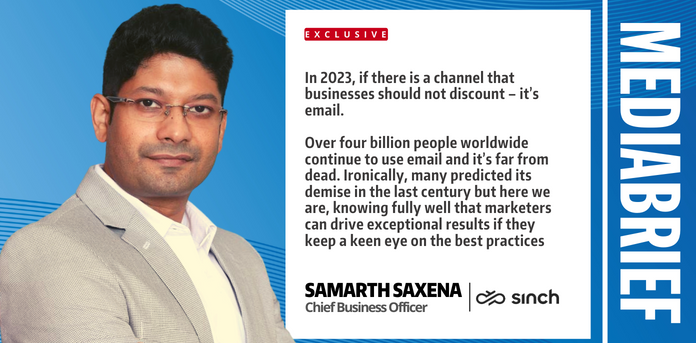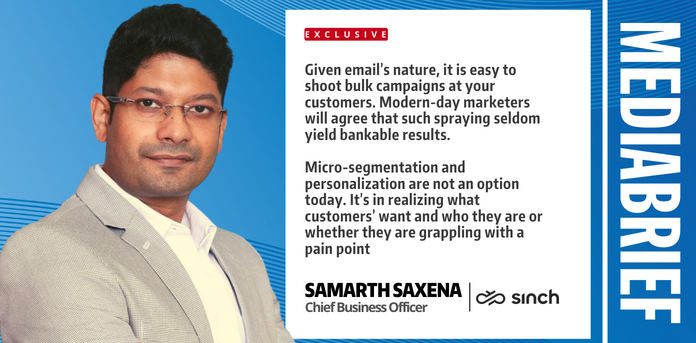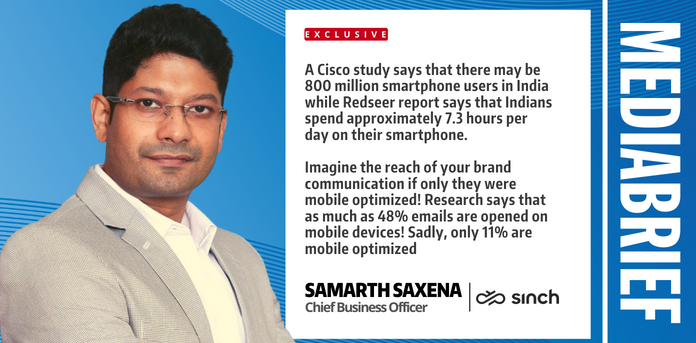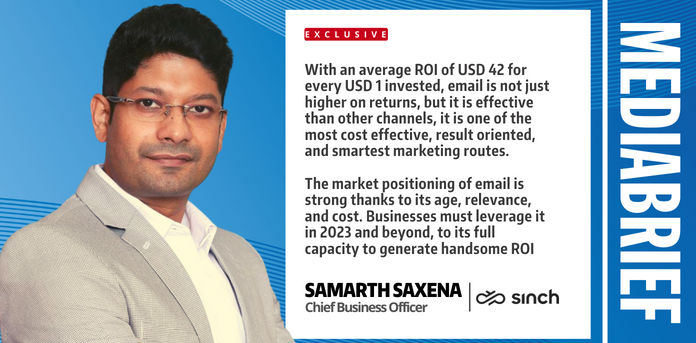Email marketing is in its fourth decade – older than SMS and still young enough to compete with newer channels that promise to deliver value, speed, and scale. In 2023, if there is a channel that businesses should not discount – it’s email.
Over four billion people worldwide continue to use email and it’s far from dead. Ironically, many predicted its demise in the last century but here we are, knowing fully well that marketers can drive exceptional results if they keep a keen eye on the best practices.

The power is in the deliverability suite
Businesses can significantly improve campaign effectiveness and resultantly boost return on investment if they have a powerful email deliverability suite. Such a suite will offer cutting-edge capabilities like email verification in real-time, inbox placement, IP and domain reputation dashboard monitoring, block list monitoring, spam trap monitoring, email previews as also personalized consultation.
As much as 20% of wanted business emails never reach the intended audience due to inefficiencies but this is addressable.

Blue Tick Verification – The evolution of BIMI is here
Millions of people fall prey to phishing every day, so much so that brands cannot compromise on security. There is every reason to display loud and clear to your customer that the message they are receiving is from you and not a scammer. Brand Indicators for Message Identification or BIMI can accelerate trust in email
marketing thereby helping businesses control their logo aside brand emails. This gives your customer enough confidence to engage with your emails. Remember, trust is key.
It is critical that all the measures such as Sender Policy Framework (SPF), DomainKeys Identified Mail (DKIM), Domain-based Message Authentication, Reporting, and Conformance (DMARC), along with BIMI are put in place.
Applying a properly set SPF record prohibits domains from sending unapproved emails. DKIM implementation will assist in preventing email modifications after they have been sent. Setting up DMARC will ensure that it responds appropriately when SPF or DKIM validation fails.
In May 2023, Google launched a blue tick verification for Gmail, similar to those used by Twitter and Instagram, taking BIMI to the next stage of evolution. The search engine giant now allows Gmail users to apply for a sought-after blue checkmark by confirming their authenticity using BIMI (Brand Indicators for Message Identification), which will assist users recognize messages from legitimate senders versus impersonators.

Smoothen the campaign approval process
The maker and checker feature in email marketing platform is an important quality control mechanism that helps ensure accuracy, quality, and compliance with brand guidelines in email campaigns.
This feature involves the separation of responsibilities between two individuals or teams: the maker, who creates the email content and design, and the checker, who reviews and approves the content before it is sent out. This way, sanity of broadcast content and related details can be verified.
The lengthy manual process for determining if an email campaign is sane slows down the overall process and raises the possibility that an error will reduce the ROI impact. It’s highly recommended to get onboarded on a platform that has an in-built maker-checker concept in the email marketing platform itsel.

The more targeted, the better
Given email’s nature, it is easy to shoot bulk campaigns at your customers. Modern-day marketers will agree that such spraying seldom yield bankable results. Micro-segmentation and personalization are not an option today. It’s in realizing what customers’ want and who they are or whether they are grappling with a pain point.
As many customers, so many preferences. Therefore, micro-segmentation is more important than ever. Narrow down your target audience based on their behavior, shopping habits, exact location, seasonality and more to get winning results from email. Highly segmented campaigns do demand efficiency, capability, and scale so geographies, demographics, psychographics and behavioral segmentation is a must.
Three cheers for interactivity
Within the CPaaS suite, traditional channels are often pinpointed for being restrictive in terms of interactivity. Quite clearly, in 2023 one of the top factors determining customer loyalty is the experience.
Email marketing has the capability to get your message across to customers, non-intrusively and being richly interactive, thanks to Accelerated Mobile Pages (AMP). It allows businesses to create emails using HTML, CSS, and JavaScript and the best part, Gmail, AOL Mail, and Yahoo Mail also support AMP. Adopt the AMP functionality to boost user engagement.
At Sinch, we have seen our customers benefitting from it thereby able to convert faster. Vital tasks like confirming registration, making appointments, providing comments, completing forms, setting prices, sharing, or delivering real-time content, and many other things can now be done within the email, interactively.
Leverage the power of AI and ML
Automated decisions based on data can boost your marketing efforts. Send Time Optimization, for example is one of the most-used implementations today. Take for instance, sending a business email to your prospect at the most optimal time – that is – at a time when they engage most. This ensures that your email reaches the right person and thankfully with AI, at the right time.
And not just send but segment, recommend, and personalize better with AI.
For example, how about a cosmetic brand reaching out to their niche knowing fully well their makeup preferences, skin tone, and past purchases. This insight about customers can help brands personalize product recommendations, makeup tutorials and other tips.
AI can also help in cleaning email lists, predicting effective subject lines, and in identifying inefficiencies in your campaigns.

Recognized senders only
A clear sender identity is the first step in building trust. Make it easy for the email recipient to determine who is reaching out to them. Your organization’s name, brand name or name of a specific person is much better than being shot an email from “noreply”.
Adapting the new
What made email stick around for so long? Well, the answer is simple. It was able to evolve over time. Think about 2023. A Cisco study says that there may be 800 million smartphone users in India while Redseer report says that Indians spend approximately 7.3 hours per day on their smartphone. Imagine the reach of your brand communication if only they were mobile optimized! Research says that as much as 48% emails are opened on mobile devices! Sadly, only 11% are mobile optimized.
The kind of content also matters. Videos embedded in email content can speak to your customer base effectively and purposefully. Besides being highly engaging, they can significantly boost click-through rates and conversion rates.
The key is then to adapt the new-age trends and make your email strategy much more powerful.
Email versus other channels
Email has survived the test of time and what’s better – it has advanced to suit the requirements of the modern-day marketer. Businesses cannot depend on just one channel today so when it comes to email versus other channels, let us say, that email is here to survive and thrive. Let’s see why.
- Smartphone users prefer business communications via
- 2 billion emails were being sent and received in 2022. This number is only growing.
- From USD 7.5 billion in 2020, email marketing revenue is poised to reach USD 17.9 billion by 2027
- 75% receive brand communication through email

Consequently, businesses are allocating a higher budget for their email marketing efforts. Of late, Facebook, Instagram are gaining popularity but what sets them slightly disadvantageous is the fact that success depends on the frequency, that is, how often your message is being viewed.
Moreover, Facebook ads, Google ads, SEO, webinars, and other channels bring in new leads- agreed- but that’s where its usefulness ends. Email is then your saviour channel – adaptable to any stage of customer journey. Simply get the logic of email inboxing right and your message lands right where it should.
With an average ROI of USD 42 for every USD 1 invested, email is not just higher on returns, but it is effective than other channels, it is one of the most cost effective, result oriented, and smartest marketing routes.
The market positioning of email is strong thanks to its age, relevance, and cost. Businesses must leverage it in 2023 and beyond, to its full capacity to generate handsome ROI.
Read this exclusive interview with Samarth Saxena on Mediabrief.